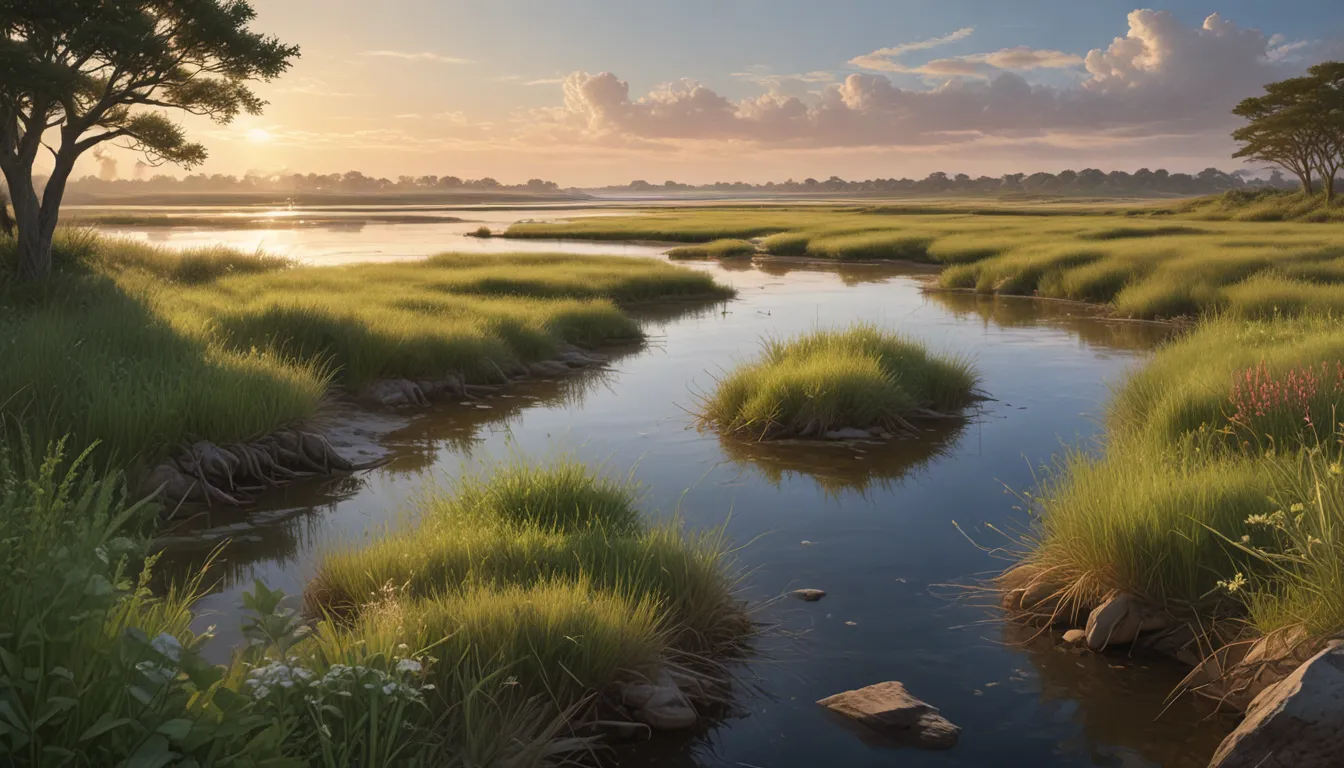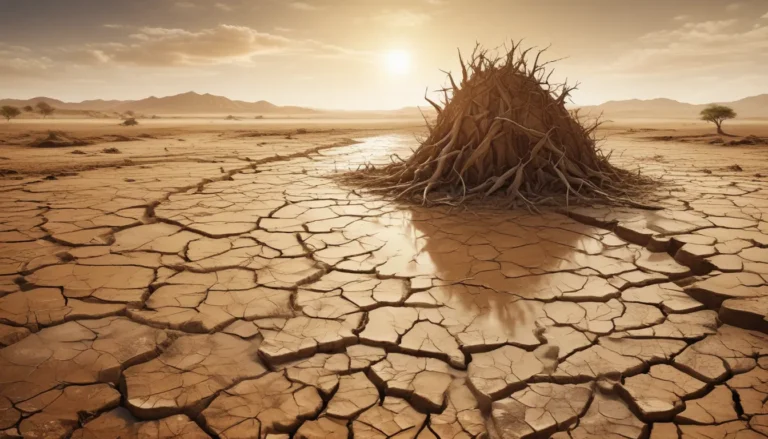A Note About Images: The images used in our articles are for illustration purposes only and may not exactly match the content. They are meant to engage readers, but the text should be relied upon for accurate information.
Welcome to the mesmerizing world of salt marshes, where coastal wetlands teem with life and provide invaluable services to our planet. In this article, we will delve into 18 astounding facts about salt marshes, shedding light on their significance, the diverse array of organisms that thrive within them, and the essential functions they serve in maintaining coastal health.
Salt Marshes: Coastal Wetlands Teeming with Life
Salt marshes are unique ecosystems that can be found along coastlines worldwide, where the land meets the sea. These vibrant habitats are characterized by the presence of salt-tolerant plants and are heavily influenced by tidal flows, creating a dynamic and ever-changing environment.
The Incredible Biodiversity of Salt Marshes
Salt marshes are home to a rich variety of plant and animal species, making them crucial habitats for countless organisms. From migratory birds and fish to shellfish and invertebrates, the biodiversity found within salt marshes is truly awe-inspiring.
Protecting Against Coastal Erosion
One of the remarkable functions of salt marshes is their role as natural barriers against coastal erosion and storm surges. The dense network of vegetation and mudflats within salt marshes helps absorb and dissipate the energy of waves and tides, providing protection to shoreline communities.
A Hub of High Productivity
Salt marshes are highly productive ecosystems, brimming with essential nutrients and organic matter. They play a pivotal role in the carbon cycle, capturing and storing significant amounts of carbon dioxide from the atmosphere, thus aiding in the mitigation of climate change.
Salt Marshes: A Multi-seasonal Haven
Salt marshes offer a unique habitat that serves as a source of food, shelter, and nesting grounds for various species throughout different seasons. Many migratory birds depend on salt marshes as stopover sites during their long journeys, highlighting the importance of these ecosystems in supporting wildlife.
Acting as Natural Filters
The dense root systems of salt marsh plants act as natural filters, removing pollutants and excess nutrients from the water that flows through them. This filtration process improves water quality and benefits adjacent marine ecosystems, showcasing the vital role salt marshes play in maintaining environmental health.
Essential Nursery Areas
Salt marshes serve as critical nursery areas for many commercially valuable fish species, providing protection for juvenile fish and shellfish as they grow and develop before venturing into the open ocean. The vegetation within salt marshes offers a sanctuary for these young marine organisms to thrive.
Adaptations to Salinity
Salt marsh plants have evolved unique adaptations that enable them to survive in high salinity environments. From osmoregulation to specialized salt-excreting glands, these plants have developed remarkable mechanisms to thrive in challenging coastal conditions.
The Dynamic Nature of Salt Marshes
Salt marshes are dynamic ecosystems, constantly shaped by the ebb and flow of tides. The plants and animals inhabiting these habitats have evolved to adapt to the ever-changing conditions within salt marsh environments, illustrating the resilience of these unique ecosystems.
Carbon Storage Powerhouses
Due to their high productivity and carbon-trapping abilities, salt marshes are considered powerful carbon sinks. By capturing and storing carbon dioxide, salt marshes play a significant role in mitigating climate change, helping to reduce greenhouse gas concentrations in the atmosphere.
The Historical and Cultural Significance of Salt Marshes
Salt marshes have been integral to human history, providing a source of food, medicine, and materials for construction and livestock feed. Additionally, these coastal ecosystems hold cultural significance in many communities, inspiring traditions, folklore, and artistic expressions that celebrate the deep connection between humans and nature.
Habitat for Endangered Species
Many endangered and threatened species rely on salt marsh habitats for their survival, underscoring the critical importance of protecting and preserving these ecosystems. Species such as the saltmarsh sparrow and diamondback terrapin depend on salt marshes for their continued existence, highlighting the need for conservation efforts.
Vulnerabilities to Climate Change
Despite their resilience, salt marshes are highly vulnerable to the impacts of climate change, including sea-level rise and increased storm intensity. These threats pose significant challenges to the future survival of salt marsh ecosystems, emphasizing the urgency of conservation and restoration efforts.
Restoration Initiatives
Recognizing the importance of salt marshes, restoration efforts are underway to protect and restore degraded salt marsh habitats. These initiatives aim to enhance habitat quality, improve ecosystem resilience, and safeguard the invaluable services that salt marshes provide to surrounding environments.
Engaging with Salt Marshes: Recreational Opportunities
Salt marshes offer a host of recreational opportunities, from birdwatching and hiking to kayaking and fishing. These activities provide a chance for individuals to connect with nature, appreciate the beauty of these coastal environments, and experience firsthand the diverse array of wildlife that call salt marshes home.
A Hub for Research and Education
Salt marshes serve as valuable sites for scientific research and environmental education, offering a living laboratory for studying coastal processes, ecosystem dynamics, and the impacts of human activities on these fragile ecosystems. By engaging with salt marshes through research and education, we can deepen our understanding of these habitats and promote conservation efforts.
Conclusion: Embracing the Marvels of Salt Marshes
In conclusion, salt marshes are truly remarkable ecosystems that play a fundamental role in maintaining coastal health and supporting biodiversity. From their vital functions in coastal protection to their significance in cultural heritage and habitat for endangered species, salt marshes are indispensable to our planet’s well-being.
By learning about the astounding facts of salt marshes and embracing their wonders, we can foster appreciation for these unique ecosystems and advocate for their conservation. Let us join together in protecting and preserving salt marshes for future generations to cherish and enjoy, ensuring that these coastal marvels continue to thrive in harmony with nature.
Explore Further: FAQs About Salt Marshes
- What is a salt marsh?
-
A salt marsh is a coastal ecosystem flooded and drained by tides, characterized by salt-tolerant plants and serving as a transition zone between land and sea.
-
How are salt marshes formed?
-
Salt marshes typically form in shallow, protected water bodies like estuaries or bays, where sediments accumulate and vegetation takes root, creating these dynamic ecosystems.
-
What wildlife can be found in salt marshes?
-
Salt marshes are home to a diverse array of wildlife, including birds, fish, crabs, shrimp, and mollusks, contributing to the rich biodiversity within these habitats.
-
What are the benefits of salt marshes?
-
Salt marshes provide essential benefits, acting as buffers against erosion and storm surges, serving as nurseries for marine species, and improving water quality through natural filtration.
-
What threats do salt marshes face?
- Salt marshes face threats such as coastal development, pollution, sea-level rise, and climate change, posing challenges to the delicate balance of these ecosystems and their long-term survival.
Join us in celebrating the wonders of salt marshes and embarking on a journey of discovery through these captivating coastal ecosystems. Let us appreciate the beauty, diversity, and importance of salt marshes as we work together to safeguard their future.






